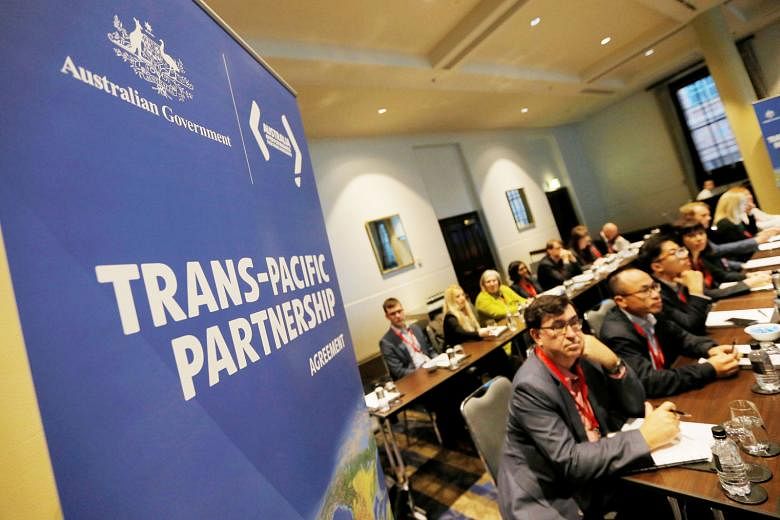In July, the remaining 11 Trans-Pacific Partnership (TPP) members met in Hakone, Japan, to deliberate the future of the TPP.
The TPP would - if the United States had not pulled out in January - have substantially expanded trade between its members. More importantly, it would have been the first truly 21st-century trade agreement, as it would have substantially updated and extended international trade rules responding to new technological developments and economic realities. Yet, some achievements of the TPP might not be lost.
The TPP holds important lessons for other ambitious regional trade deals both in terms of process and content. Furthermore, several chapters of TPP can become blueprints for ongoing and upcoming negotiations at the regional or multilateral level. For example, the talks to renegotiate the North American Free Trade Agreement(Nafta), which kicked off last month, might heavily borrow from TPP. At the multilateral level, a one-to-one transposition of TPP provisions seems unlikely, yet certain provisions could serve as valuable aspirations for future multilateral trade talks.
The TPP was supposed to become one of the most comprehensive and ambitious mega-regional trade agreements. It would have stimulated trade among its members, not so much by a reduction in tariffs, but by promoting regulatory coherence, for example, by harmonising the rules of origin and origin procedures, also known as ROO.
TPP also introduced several regulatory innovations, including in areas where the need for new trade rules has become increasingly urgent. For example, e-commerce is flourishing across countries and yet the World Trade Organisation (WTO) trade rule book is lagging decades behind. Another example is biologicals, or expensive medicines derived from living organisms, which are gaining ground for medical treatment but are not yet covered, even by bilateral trade agreements. The TPP thus showcases the kind of new international trade rules that must be written.
However, the chances to introduce TPP provisions at the multilateral level are limited. The TPP members were able to negotiate a deal because they were a small group of countries with a similar vision of a more open and rules-based trade regime.

At the WTO, the negotiation room is packed with countries holding different visions and ambitions. Furthermore, the WTO has become a truly universal organisation. As is the case for the United Nations, the decisions at the WTO are based on consensus, which has become increasingly difficult to reach. And if consensus is achieved, the agreement is typically less ambitious and less binding compared with a regional or bilateral trade agreement.
The withdrawal of the US from the TPP has weakened the regulatory impulse that the TPP might have been able to provide. As described above, several of the regulatory innovations provided in the TPP were pushed by the US in exchange for access to the American market. For example, Vietnam was ready to overhaul its domestic labour laws given the prospect of better market access in the US.
If the TPP members would like to push ahead without the US, it is unlikely that the current agreement could be maintained. The current agreement constitutes a delicate balance of offers and demands by all parties in both traditional and new areas. The US withdrawal means that new negotiations are needed to find a new balance. It remains to be seen how much of the current TPP provisions will survive such an undertaking.
The most likely places where the TPP provisions will appear again are the recently envisioned bilateral trade agreements between the US and countries in the Asia-Pacific. US President Donald Trump announced the replacement of the TPP with bilateral deals on his first day in office. In these bilateral deals, the US as the world's largest economy will have substantial leverage on its relatively small trade partners. It is therefore likely that some chapters of the TPP, for example on e-commerce or labour rights, which were promoted by the US, will find their way into these bilateral trade agreements.
Another outlet where the TPP provisions might become important is in the renegotiations of Nafta which started last month. The Nafta agreement dates from the mid-1990s. Like the WTO agreement, Nafta must be updated to take into account new technological developments. Furthermore, Mr Trump has announced his determination to renegotiate Nafta in order to recreate a more level playing field between US workers and their Mexican counterparts. The TPP chapter on labour rights might serve as a blueprint for the labour rights provisions in an updated Nafta.
The TPP clearly delineates the contours of a revamped multilateral trade framework that responds to the needs of the 21st century. Let's salvage the best parts.
- The writer is a senior economist at Asian Development Bank Institute.

